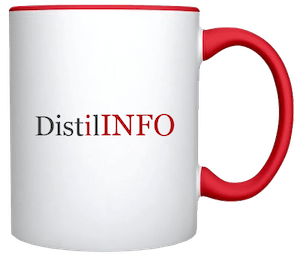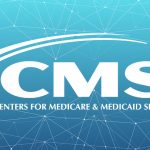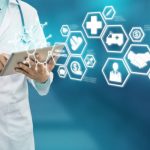Apple has grand ambitions to move into the health care field. The company’s CEO Tim Cook once referred to health as the company’s “greatest contribution to mankind.”
In the last five years or so, the company has built up a big internal team staffed with doctors, health coaches, and engineers. It has developed health-focused software and hardware, and even started medical clinics for its own employees.
But with a concrete strategy and a biomedical breakthrough, such as non-invasive blood pressure or blood sugar monitoring, it could do a lot more. Ahead of its World Wide Developer Conference (WWDC) next week, here’s what people in the health and technology sector think of Apple’s influence and achievements so far — and where it needs to go next.
What it’s done so far
Apple has a slew of products and services in health care.
Want to publish your own articles on DistilINFO Publications?
Send us an email, we will get in touch with you.
Its primary product is the Apple Watch, and health is both a major use case and selling point. Its smartwatch device offers activity tracking, heart rate monitoring, an electrocardiogram to detect irregularities with the heart’s rhythm, fall detection alerts, integrations with third-party health apps, and more.
The Apple Watch has other benefits, but overall, “the greatest use case for Apple Watch still remains health,” said Ben Bajarin, an analyst with Creative Strategies specializing in consumer technology.
Henrik Berggren, founder of a diabetes-focused virtual medical clinic called Steady Health, said the Apple Watch is most helpful when it comes to tracking exercise and incorporating data from existing blood-sugar tracking devices. Many of Steady Health’s patients already have Apple Watches or iPhones, and the group will look at that data in addition to their blood glucose levels and eating habits. “That exercise part they’re doing quite well today,” he says.
Beyond the Watch, vice president of technology Kevin Lynch is working to let customers bring medical information, including lab results and medical history, to their iPhones. That software, known as Apple Health Records, is continuing to make strides, but is still held back by the fact that consumers have to remember which doctors and hospitals they’ve been to in recent years and log into those systems separately.
The company has also developed software kits for third-party developers to build health applications. Among the most widely used is ResearchKit, which helps academics recruit people to their clinical trials via mobile devices.
Internally, Apple’s California-based employees can use a health-care system known as AC Wellness. The company doesn’t speak about it much and hasn’t said whether it plans to expand those clinics to consumers more broadly. For now, it likely functions as a way for the health teams to learn about the practice of delivering medicine – and not just building tech.
During the Covid-19 pandemic, Apple teamed up with Google to release contact tracing technology for mobile phones, which public health researchers can use to build apps to track exposure to the virus. The company has seen the most traction for that in Europe and Asia.
Weighing the pros and cons
Doctors have mixed feelings about the role of consumer health devices, including Apple’s.
While some are bullish on their potential, others say that it’s highly cumbersome for them to analyze this patient-generated information, and they don’t currently get paid for the extra work. Many are simply refusing to look at data from wearable devices.
When John Koetsier, a technology consultant and writer, tried to share his Apple Watch data with a doctor, he was essentially told to keep it to himself. Koetsier had been tracking his food intake, weight and exercise on his own. But his doctor said that he had too many information sources already, and was feeling overwhelmed.
There are also questions about the accuracy of wearable devices when tracking health data.
“I trust Apple’s step tracking, but heart rate I’m more concerned about,” said Dr. Josh Emdur, a telemedicine doctor with SteadyMD. Emdur said he once admitted a patient into the hospital a few years ago because of an Apple Watch result, but it turned out to be a false alarm. He acknowledges that the data seems to have improved since then, and he’s now using Apple Watches as a heart health screening tool. But he’ll still recommend a medical device, like a Zio cardiac monitor, as a followup.
“To make the use- generated data actionable from devices like the Apple Watch, it needs to integrate better with electronic health record dashboard so a care team can see trends and it all comes in in a structured way,” he said.
New York-based cardiologist Dr. Jeffrey Wessler says the Apple Watch offers more benefits than harms. “It really was a catalyst for the industry because it was the first time a consumer device began to infiltrate the clinical environment in a high volume way,” said Wessler, who runs preventative heart health clinics called Heartbeat. ”
But he notes that it can be frustrating patients come in with a concerning Apple Watch reading but no risk factors. In that case, there might not be a clear treatment pathway, and they’re simply sent back home and told to come in if they develop symptoms.
“That’s taking visits and time away from people who really need us,” said Wessler.
Source: CNBC







